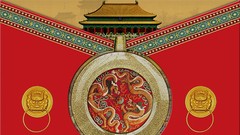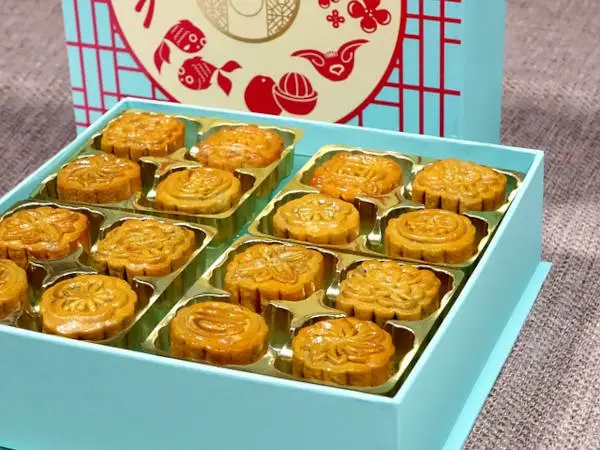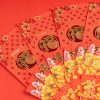
In Chinese culture and tradition, the Mid-Autumn Festival is considered the second-most important festival, only after the Chinese New Year or as it’s also called the Spring Festival.
The Mid-Autumn Festival is always celebrated on the 15th day of the 8th month of the Chinese Lunar Calendar, which was believed to be the day when the moon was the most visible.
The Chinese calendar has only 354 days instead of the 365 days we have in our Gregorian calendar. Due to this difference in the number of days, the Mid-Autumn Festival’s dates vary around September or October, but it always happens in the middle of the autumn season in China (hence the name).
History and Legend Behind the Mid-Autumn Festival
Before we further discuss how the Mid-Autumn Festival is celebrated, let us first learn about the history and legend behind it.
Originally, the Mid-Autumn Festival was celebrated to worship the moon. Back during the Zhou Dynasty (1045-221 BC), moon worshiping ritual was practiced to pray for abundant harvests. However, it was only during the Warring States Era (475-221 BC) that this Festival was called “Mid-Autumn” because it was celebrated midway during the autumn season.
This tradition continued until the time of the Tang Dynasty (618-907 AD). During this era, moon worshiping was even more emphasized, and everyone from the Emperor himself, the nobles, and even the peasants throw parties during the Mid-Autumn Festival. It was during this time that the ancient Chinese started incorporating songs and dances as parts of the moon worshiping ritual.
During the Song Dynasty (960 – 1279 AD), the moon worshiping practice truly evolved into a festival. It was established that the Mid-Autumn Festival was celebrated every the 15th day of the 8th month, and the tradition holds until today.
The popularity of this festival peaked during the Ming and Qing Dynasties (1368-1912 AD). Various activities are incorporated into the festival from songs and dances, the famous Dragon Dance (or Lion Dance), and releasing lanterns into the sky, as also practiced today.
There are various myths and legends behind the Mid-Autumn Festival, but the most popular one is one of a hero named Hou Yi.
According to the legend, back then there were 10 suns in the sky, and these suns scorched the Earth so that the soils are dry and infertile. Humans back then can’t grow anything, so people have been living in poverty and famine.
It was told that a hero named Hou Yi destroyed 9 of the 10 suns with his arrows, bringing abundance and rain into the land.
The Empress of Heaven, valuing Hou Yi’s heroism, presented Hou Yi with the elixir of immortality.
Hou Yi had a beautiful wife named Chang E, and a pupil named Feng Meng. Feng Meng was told to be a greedy man, and, envying Hou Yi’s elixir of immortality, sought for the best chance to steal it.
One day when Hou Yi was hunting, Feng Meng finally attempted to steal the elixir.
However, during the attempt, Chang E caught Feng Meng in the act and knowing that she wouldn’t be able to beat Feng Meng in a fight, hastily drank the elixir.
Chang E, now immortal, flew to the moon.
Once back home, Hou Yi learned of what happened and grown saddened by it. It was said that every the 15th day of the 8th month when the moon was the biggest, Hou Yi always prepared a feast, hoping that he can catch a glimpse of Chang E on the moon.
Until today, people still withhold the tradition of offering incense, food, fruits, and drinks under the full moon based on this legend.
Online Courses about Chinese Culture from Udemy (Aff.link)


Activities and Traditions During the Mid-Autumn Festival
The Mid-Autumn Festival involves many traditions that are deeply rooted in Chinese culture. Even today, this festival isn’t only celebrated in China, but also by many people of Chinese descent that are spread all around the world.
While the Mid-Autumn festival is celebrated with many different activities, there are two most important ones:
Mooncake
The mooncake is the most important aspect of the Mid-Autumn Festival. Without presenting and eating mooncakes, simply put, the Mid-Autumn Festival won’t be complete.
The mooncake itself has a long history that can be traced back until the times of the Yuan Dynasty (1280-1368 AD). The Yuan Dynasty was built by the Mongol invaders. The Chinese Han people rebelled against the Mongols to win back China, and it was believed that the Han people communicated secretly by hiding letters inside mooncakes.
According to the legend, the message of the letters coordinated an attack on the 15th day of the 8th month, and this is why the mooncake is celebrated as a remembrance of the successful rebellion of the Han People to topple the Yuan Dynasty.
The mooncake is a round-shaped pastry made of flour, oil, and sugar. Typically the mooncake has fillings made of either red-bean paste or lotus paste, but other fillings like salted egg yolk and preserved fruit are also common. It is typically between 10 cm (4 in) in diameter and 3-4 cm (114-112 in) in thickness.
The mooncakes are believed to symbolize the full moon, and the full moon itself in the Chinese tradition is believed to symbolize completeness and togetherness. Thus, many people believe that eating mooncakes together during the Mid-Autumn Festival will bring harmony and togetherness to the family.
Click here to see some delicious Mooncakes.– Opens in new tab.
The Lantern Parade
Another important tradition of the Moon-Autumn Festival is the Lantern Parade. Similar to mooncakes, the Mid-Autumn Festival won’t be complete without the tradition of releasing lanterns into the sky.
Traditionally the lanterns are made of red paper, with a candle placed in the middle. However, in this modern age, lanterns are made from various materials, even with plastics and LED lights. Also, now the lanterns come in various attractive shapes, so both children and adults can find the lantern most attractive for them whether they prefer a traditional-shaped lantern or modern ones with various designs. However, for safety reasons, lanterns with candles (which are prone to fire hazards), are relatively rare nowadays.
In Chinese culture, the lantern is a symbol of a happy reunion. The lantern is round-shaped, and “round” in Mandarin Chinese has a similar pronunciation with “reunion”.
A very popular tradition is to release the lantern together during the night to the sky. Typically the wishes are written and tied to the lantern, and they release the lanterns to the sky, hoping the lanterns will fly as far and high as possible to carry their wish to the gods.
Typically around 10 days before the Mid-Autumn Festival, we will find lanterns everywhere. Many people in Guangdong and Hong Kong make traditional lanterns with bamboo strips, and on the festival night, before the lanterns are released, the lanterns are tied to the bamboo poles and hung in the heights of the house. During this time, we can also easily find lanterns in various markets.
Click here to see some awesome Chinese Lanterns.- Opens in new tab.

How Mid-Autumn Festival Is Celebrated All Around the World
The Mid-Autumn Festival is not only celebrated in China, but all over the world, and mooncakes are now also very popular in various Asian countries.
Here are some variations of the Mid-Autumn Festival in various countries.
Japan
In Japan, the Mid-Autumn Festival is called Tsukimi, and similar to the Chinese version, the festival is held to worship the moon gods and goddesses. However, rather than eating mooncakes, the Japanese eat rice cakes known as dango and mochi.
Korea
The Mid-Autumn Festival is called Chuseok in Korea and is also celebrated to wish for abundance in harvests and fertile farms. In Korea, it is also common to visit the tombs of their parents and ancestors during the festival.
Vietnam
In Vietnam, the festival is called Tet Trung Thu, or also called Children’s Festival. As the name suggests, in Vietnam this festival is more focused on children, but the Vietnamese also celebrate this festival as a ritual for the moon goddess and earth god.
In this festival, children receive gifts and toys, while the parents enjoy eating the mooncakes with the family. The children also receive goldfish-shaped lanterns, which symbolize the parents’ prayer for success.
Thailand
In Thailand, the festival is celebrated very similarly to how the Chinese celebrated it, but the legend behind the festival differs.
In Thailand, it is believed that the 15th day of the 8th month is the day when the Eight Immortals visit Earth to eat mooncakes and peach-shaped cakes to celebrate the birthday of goddess Guanyin.
In Thailand, it’s common to find mooncakes with Durian fillings, which shows how the mooncakes also have many different variations all around the world.
Singapore, Malaysia, Hong Kong, Taiwan, Philippines
People of Chinese descent in these countries also celebrate the Mid-Autumn Festival, and mainly the activities are very similar to that of China. Mooncakes and lanterns remain the emphasis of this festival, but there are also slight variations.
For example, in Taiwan, it’s common to also prepare outdoor barbecue during the Mid-Autumn Festival, and they’ll enjoy the barbecue feast together with friends and family under the full moon.
In Philipines, various gambling activities between family members (incorporating a small amount of money) are also common as entertainment and as a bonding activity between family members.
Check out our “Free Culture Library“. We have compiled some great free resources, about Chinese culture, for your research.
Stay in Touch
 Join our newsletter by using the forms on this website or click here!
Join our newsletter by using the forms on this website or click here! Follow us on Google News
Follow us on Google News Follow us on Facebook
Follow us on Facebook
Featured Image form PxHere.com




